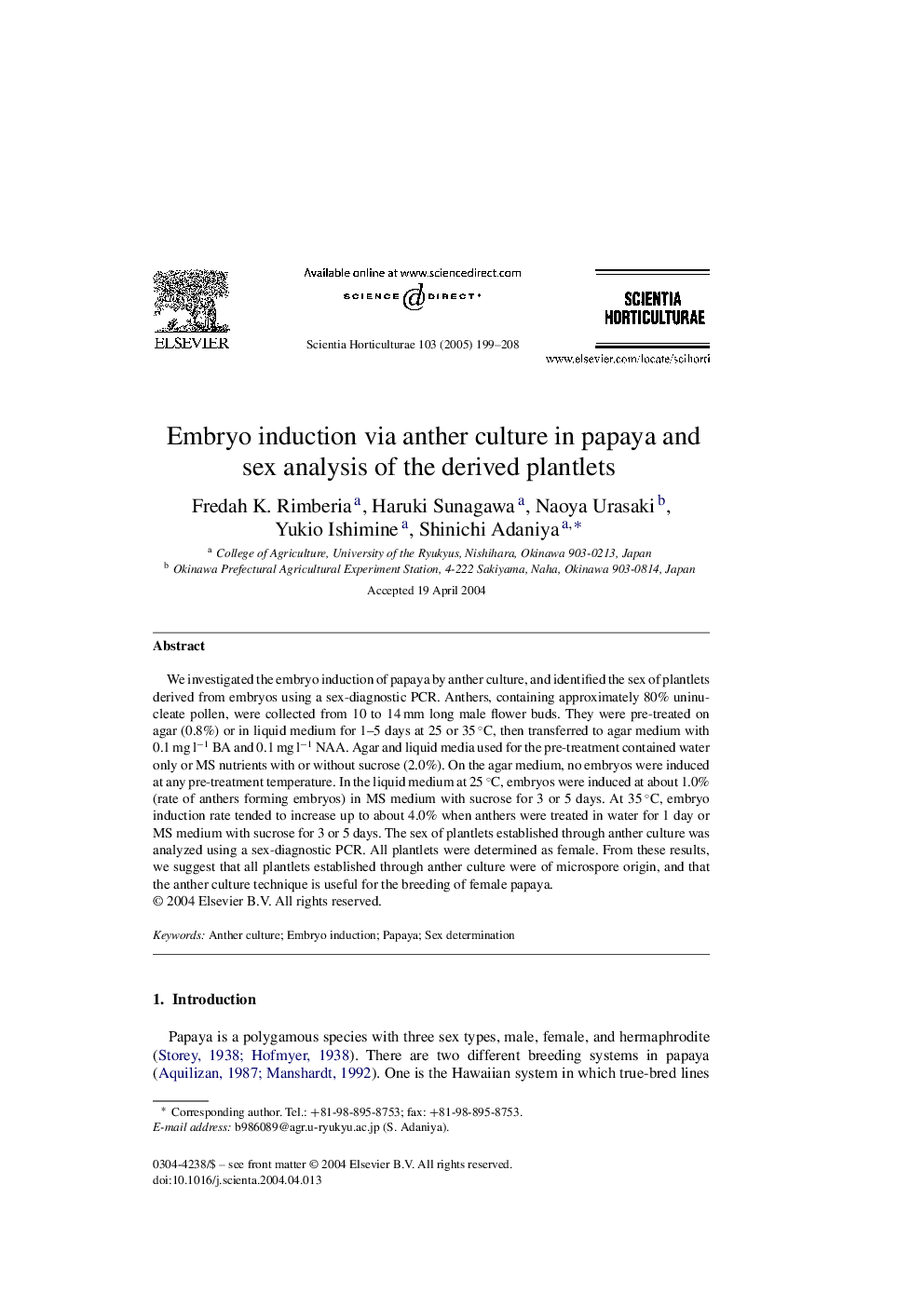| Article ID | Journal | Published Year | Pages | File Type |
|---|---|---|---|---|
| 9488830 | Scientia Horticulturae | 2005 | 10 Pages |
Abstract
We investigated the embryo induction of papaya by anther culture, and identified the sex of plantlets derived from embryos using a sex-diagnostic PCR. Anthers, containing approximately 80% uninucleate pollen, were collected from 10 to 14 mm long male flower buds. They were pre-treated on agar (0.8%) or in liquid medium for 1-5 days at 25 or 35 °C, then transferred to agar medium with 0.1 mg lâ1 BA and 0.1 mg lâ1 NAA. Agar and liquid media used for the pre-treatment contained water only or MS nutrients with or without sucrose (2.0%). On the agar medium, no embryos were induced at any pre-treatment temperature. In the liquid medium at 25 °C, embryos were induced at about 1.0% (rate of anthers forming embryos) in MS medium with sucrose for 3 or 5 days. At 35 °C, embryo induction rate tended to increase up to about 4.0% when anthers were treated in water for 1 day or MS medium with sucrose for 3 or 5 days. The sex of plantlets established through anther culture was analyzed using a sex-diagnostic PCR. All plantlets were determined as female. From these results, we suggest that all plantlets established through anther culture were of microspore origin, and that the anther culture technique is useful for the breeding of female papaya.
Related Topics
Life Sciences
Agricultural and Biological Sciences
Horticulture
Authors
Fredah K. Rimberia, Haruki Sunagawa, Naoya Urasaki, Yukio Ishimine, Shinichi Adaniya,
